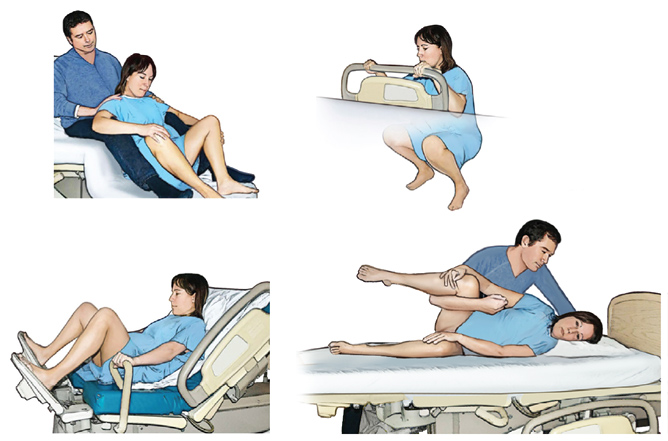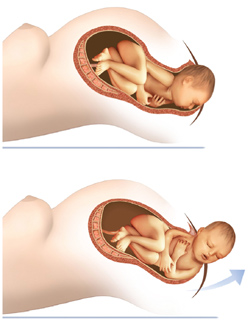Second stage: Descent and birth of your baby
The second stage of labour begins when your baby has dropped well down into your pelvis and the cervix is fully open (dilated). The baby can now descend into your vagina to be born.
Pushing
When your cervix is open (dilated) to 10 cm, the sensations become different; you will probably feel the need to push. The contractions become a force within you, and all your energy is concentrated on pushing to help bring your baby into the world.
You may feel the urge to push before your cervix is fully dilated. Your care team will guide you when it’s time to start pushing to ensure that your pushes are more effective.
The time between contractions can allow you to recover between pushes.
You may have a bowel movement during the pushing stage. This is completely normal. It is also possible that your perineum won’t have time to stretch enough as the baby comes out and it may tear. These tears usually heal well on their own after the birth.
If you have an epidural, your awareness of the urge to push is lessened and may even be entirely absent at the beginning of the second stage. Awareness of the urge will come later, as your baby descends with the contractions. Normally, you can wait to push until you feel the urge to do so. Your efforts will then be more effective—you’ll do a better job of pushing and won’t have to push as long.
Pushing positions
See below examples of the various positions you can try during the second stage of labour.
![]() With help from the person accompanying you or the healthcare team attending the birth, find a position that works for you. Feel free to change positions when you feel the need to do so.
With help from the person accompanying you or the healthcare team attending the birth, find a position that works for you. Feel free to change positions when you feel the need to do so.
Possible pushing positions

Birth of your baby

The time when you push is an intense experience for you and those accompanying you. As your baby prepares to enter the outside world, the top of his head will appear, and the father or partner will be able to see the baby’s hair.
You can also watch your baby’s progress in a mirror (mirrors are available in most birthing rooms). After the top of the head, the baby’s face will appear. Another push and the baby’s shoulders and rest of his body will come out.
Labour: Process by which the baby passes from the uterus to the outside world, primarily through contractions of the uterus.
Perineum: The part of the body between the vagina and the anus.


